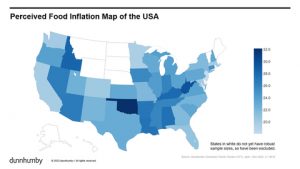 The Global Food Safety Initiative, part of The Consumer Goods Forum, announces its 22nd Annual Conference, “Delivering Food in Turbulent Times: The Need for Agility & Resilience.” The three-day conference will take place at the Westin Peachtree Plaza in Atlanta from April 24-27.
The Global Food Safety Initiative, part of The Consumer Goods Forum, announces its 22nd Annual Conference, “Delivering Food in Turbulent Times: The Need for Agility & Resilience.” The three-day conference will take place at the Westin Peachtree Plaza in Atlanta from April 24-27.
The GFSI annual conference, in partnership with industry organizations, is the meeting place for decision-makers from across the public and private supply chain to share knowledge, strengthen their networks and do business.
Following last year’s in-person reunion in Barcelona, this year’s global event will host more than 600 food industry leaders from over 50 countries. 2022 attendees included household brands such as The Coca-Cola Company, Dole Food Company, General Mills, Mondelez International, Pick N Pay, The Kroger Co. and Walmart.
“After last year’s successful return to an in-person GFSI Annual Conference, we’re excited to see what this year’s event will bring,” says Erica Sheward, director of the Global Food Safety Initiative. “Though the initial uncertainties and struggles of the early pandemic have since fallen away, we still face unprecedented global challenges that affect the food and ingredient supply chain.
“As such, it’s more important than ever that industry experts and leaders across all sectors and verticals come together to discuss the best way forward. We’re glad to be the group fostering these conversations and fueling the future of the industry.”
The conference program will feature a group of hand-picked speakers, including CEOs, public authorities, renowned experts and academics, industry leaders, innovators and grassroots players. Attendees can select from sessions across three tracks – Benchmarking and Harmonization, Capability Building, and Public-Private Partnerships Collaboration. Sessions will center around food safety and the unprecedented times we face today because of economic uncertainty, climate change, geopolitical crisis and the disruption in food supply chains which have significantly impacted access to safe and secure food across the globe.
For more information about the conference and to register, visit https://mygfsi.com/events/gfsi-conference/register/. To request sponsorship info, brands can contact sponsorship@theconsumergoodsforum.com. For practical info, including COVID-19 requirements, travel and lodging details, and dress code, visit https://mygfsi.com/events/gfsi-conference/practical-info/.
The Consumer Goods Forum is a global, parity-based industry network that is driven by its members to encourage the global adoption of practices and standards that serves the consumer goods industry worldwide. It brings together the CEOs and senior management of some 400 retailers, manufacturers, service providers, and other stakeholders across 70 countries, and it reflects the diversity of the industry in geography, size, product category and format.
Its member companies have combined sales of EUR 3.5 trillion and directly employ nearly 10 million people, with a further 90 million related jobs estimated along the value chain. It is governed by its Board of Directors, which comprises more than 55 manufacturer and retailer CEOs.
For more news of interest to the food and beverage industry, subscribe to Gourmet News.

